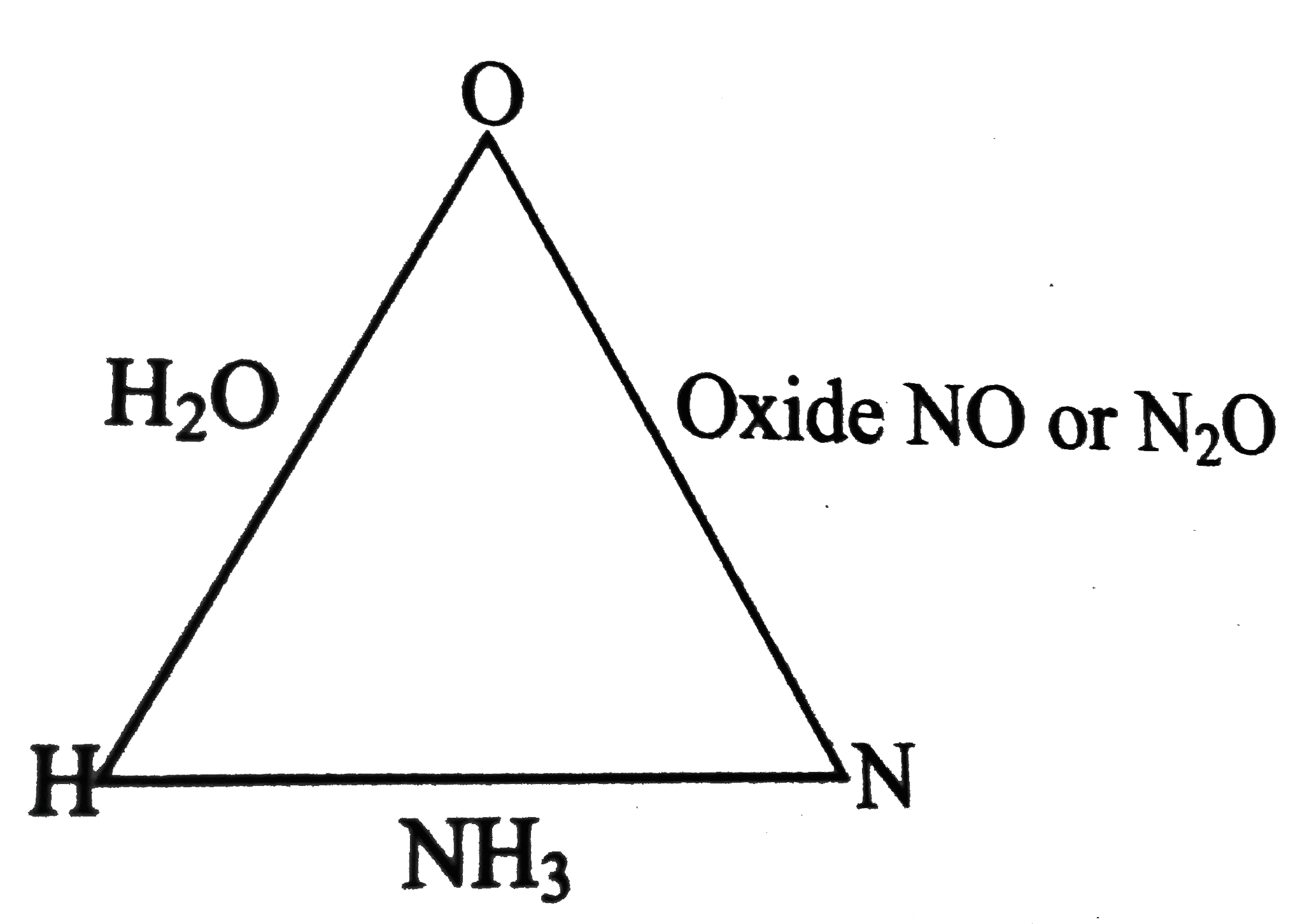1g of oxygen combines with 0.1260g of hydrogen to form H2O. 1g of nitrogen combines with 0.2160g of hydrogen to form NH3. Predict the weight of oxygen required to combine with 1g of nitrogen to form an oxide.
The correct Answer is:A
In H2O:0.126gofH2 combines with 1g of oxygen.
∴1gofH2 combines with =10.126=7.936gofO2
In NH3:0.216gofH2 combines with 1gofN2
∴1gofH2 combines with =10.126=4.629gofN2
Ratio of O:N in NH3 which combines with a fixed
weight of H2(1g)=7.936.629=7.9364.629:4.6294.629−1.71:1
∴ weight of oxygen which comibnes with 1g of N should be 1.741gor its simple multiple.

Topper's Solved these Questions
- SOME BASIC CONCEPTS AND MOLE CONCEPTBook:CENGAGE CHEMISTRYChapter:SOME BASIC CONCEPTS AND MOLE CONCEPTExercise:Exercises Subjective (Limiting Reagent)
Explore 2 Videos
- SOME BASIC CONCEPTS AND MOLE CONCEPTBook:CENGAGE CHEMISTRYChapter:SOME BASIC CONCEPTS AND MOLE CONCEPTExercise:Exercises Subjective (Empirical And Molecular Formulae)
Explore 4 Videos
- SOME BASIC CONCEPTS AND MOLE CONCEPTBook:CENGAGE CHEMISTRYChapter:SOME BASIC CONCEPTS AND MOLE CONCEPTExercise:Ex 1.2 Fill In The Blanks
Explore 1 Video
- S-BLOCK GROUP 2 - ALKALINE EARTH METALSBook:CENGAGE CHEMISTRYChapter:S-BLOCK GROUP 2 - ALKALINE EARTH METALSExercise:Ex 5.1 Objective
Explore 2 Videos
- STATES OF MATTERBook:CENGAGE CHEMISTRYChapter:STATES OF MATTERExercise:Exercises (Ture False)
Explore 25 Videos
Similar Questions
Knowledge Check
5g of hydrogen reacts with32g of oxygen to form moles of water
A1B2C3D46 g of carbon combines with 32 g of sulphur to form CS2. 12 g of C also combine with 32 g of oxygen to form carbon dioxide. 10 g of sulphur combines with 10 g of oxygen to form sulphur dioxide. Which law is illustrated by them?
ALaw of multiple proportionsBLaw of constant compositionCLaw of reciprocal proportionsDGay Lussac's law.Hydrogen combines with oxygen with oxygen to form H2O in which 16g of oxygen combine with 2g of hydrogen. Hydrogen also combines with carbon to form CH4 in which 2g of hydrogen combine with 6g of carbon. If carbon and oxygen combine togather then they will do show in the ratio of
A(a)6:16 or 12:32B(b)6:18C(c )1:2D(d)12:24
4 g of hydrogen reacts with 20 g of oxygen to form water. The mass of water formed is
View Solution1 g of hydrogen combines with 80 g of bromine, and 1 g of calcium combines with 4 g of bromine. The equivalent mass of calcium is
View SolutionIn compound A, 1.00g nitrogen units with 0.57g oxygen. In compound B,2.00g nitrogen combines with 2.24g oxygen. In compound C,3.00g nitrogen combines with 5.11g oxygen. These results obey the following law
View Solution8 g of oxygen combine with 1 g of hydrogen and 29 g of calcium therefore, when calcium combines with hydrogen it must combine in the ratio of 20:1. This statement conforms to the law of
View Solution8 g of oxygen combine with 1 g of hydrogen and 29 g of calcium therefore, when calcium combines with hydrogen it must combine in the ratio of 20:1. This statement conforms to the law of
View Solution

